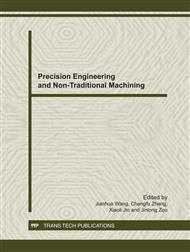p.174
p.179
p.183
p.188
p.193
p.198
p.203
p.208
p.213
Classification Inversion Algorithm of Spheroidal Particle Size Distribution Based on the Light Extinction
Abstract:
In light extinction particle sizing, a classification inversion algorithm is proposed for the non-spherical particles. The measured spheroidal particle system is inversed with different particle distribution functions and classified according to the inversion errors in the dependent model. Simulation experiments illustrate that it is feasible to use the inversion errors to inverse the spheroidal particle size distribution in the light extinction particle sizing technique and the inversion results are steady and reliable, which avoid the defects that the type of the size distribution must be assumed beforehand for the light extinction method.
Info:
Periodical:
Pages:
193-197
Citation:
Online since:
November 2011
Authors:
Price:
Сopyright:
© 2012 Trans Tech Publications Ltd. All Rights Reserved
Share:
Citation:


